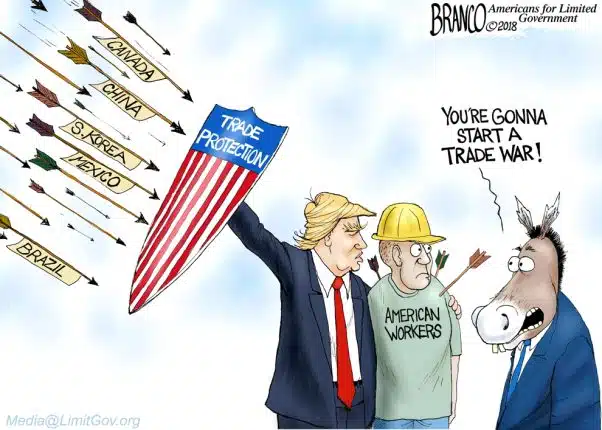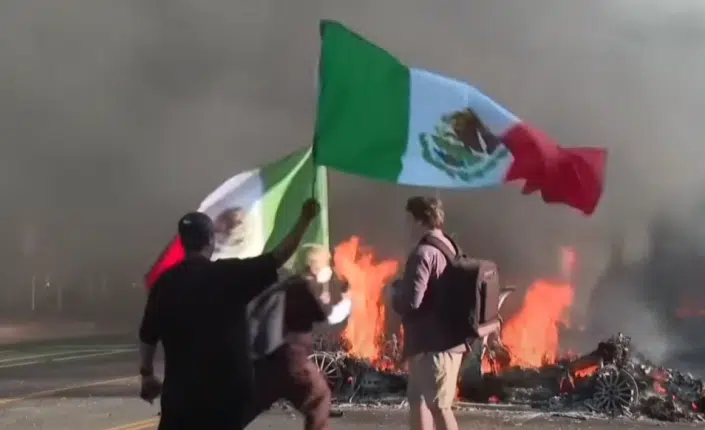Below is the testimony of Nathan Mehrens, counsel at Americans for Limited Government Research Foundation. Nathan testified today before the U.S. House Committee on Education and the Workforce Subcommittee on Health, Employment, Labor and Pensions.
Here is his testimony:
Mr. Chairman, Mr. Ranking Member, and Members of the Committee, thank you for the invitation to testify today.
I would like to briefly touch on a few key areas where I believe the actions of the U.S. Department of Labor and its Office of Labor-Management Standards (OLMS) during the last two years have significantly damaged the ability of OLMS to enforce the Labor-Management Reporting and Disclosure Act of 1959 (LMRDA).
As you know the LMRDA was passed with wide bi-partisan support. In the Senate the bill passed with 95 votes and the House passed it with 352 votes.[1] Before the Act was passed Congress held hearings over a two year period on 270 days and called over 1,500 witnesses.[2] The Act among other things provides for labor organization financial transparency and OLMS has been delegated the responsibility for enforcing most of the Act’s provisions. The Act is an important piece of legislation and requires serious, dedicated attention from OLMS in order work effectively. Pursuant to the Act OLMS has promulgated several financial reports that are required to be filed by labor organizations, their officers and employees, employers, and consultants. Like many pieces of major legislation, the LMRDA is only as good as the Secretary who enforces it.
Prior to 2001 the annual financial form used by the largest labor organizations to report their finances, the Form LM-2, reported only basic information.
During Secretary Elaine L. Chao’s tenure the Form LM-2 was overhauled. The new Form LM-2 required among other things the reporting of disbursements in functional expense categories such as “Representational Activities,“ “Political Activities and Lobbying,” and “Contributions, Gifts & Grants.” Labor organizations were no longer able to report $42 million as a single line item, but now individual disbursements of $5,000 or more in categories such as these were required to be separately disclosed.
Part of that overhaul was the creation of a Form T-1 on which unions would report the finances of “trusts in which a labor organization is interested.” These are trusts such as building funds, strike funds, and training funds. These generally have a lower level of disclosure and in some cases act like “offshore accounts” for labor organizations.
In addition to the major overhaul of the Form LM-2 the Department also made a few select enhancements to the form in a final rule that was published on January 21, 2009. These enhancements would have required among other things the reporting of the full dollar value of compensation packages that labor organizations pay to their officers and most employees. The old Form LM-2 did not adequately disclose this information. Research by the Department found that significant amounts of money were disbursed to labor organization officers and employees and on their behalf, money that was not attributed to them due to the structure of the form. That changed under the January 21, 2009 final rule.
However, even before President Obama was sworn in there were signs that the new Administration would work aggressively to reduce the staff and resources of OLMS as well as to rollback the improvements in transparency that were promulgated under President George W. Bush and Secretary Elaine L. Chao. During the presidential transition period, the AFL-CIO provided the Department with a roadmap of changes to reduce labor organization transparency. It appears that the Department has been using this roadmap as their guide.
After the Obama Administration assumed office OLMS first froze the effective date of the enhancements to the Form LM-2 and then rescinded the January 21, 2009 final rule altogether. The Department also did the same to the Form T-1. Additionally the regulation which set the procedure by which a labor organization would lose the privilege of filing a simplified report, the Form LM-3, pursuant to Sec. 208 of the LMRDA was rescinded as well. The LM-3 regulation was wholly discretionary because Sec. 208 of the LMRDA states in relevant part, “but the Secretary may revoke such provision for simplified forms of any labor organization or employer if he determines, after such investigation as he deems proper and due notice and opportunity for a hearing, that the purposes of this section would be served thereby.”[3] As such, if the Secretary believes that the privilege of filing a Form LM-3 should not be revoked for an individual labor organization then that privilege remains intact. Therefore rescinding this regulation was completely unnecessary.
The Administration also refused to enforce the current regulation which requires labor organization officers and employees to report conflicts of interest on the Form LM-30. A “non-enforcement policy” was publicly issued regarding the current regulation so long as officers and employees comply “in some manner.” On that point OLMS stated on its website:
Accordingly, OLMS will refrain from initiating enforcement actions against union officers and union employees based solely on the failure to file the report required by section 202, using the new, 2007 form, as long as individuals meet their statutorily-required filing obligation in some manner. OLMS will accept either the old Form LM-30 or the new one for purposes of this non-enforcement policy.[4]
Additionally the Department has aggressively slashed the staff of OLMS. In Fiscal Year 2006 OLMS had a full time equivalent allocation (FTE) of 384.[5] For Fiscal Year 2012 the Department’s request is for 249 FTE.[6] This is a 35% reduction in staff from the Fiscal Year 2006 level. It is thus only a matter of time before these staff cuts turn into reduced enforcement activities. Indeed, the Department’s Fiscal Year 2012 budget request details this. In Fiscal Year 2010 OLMS conducted 356 criminal investigations, up from its target of 354.[7] For Fiscal Year 2011 OLMS sets a target of only 300 criminal investigations, and the same is true for Fiscal Year 2012.[8] This is a 15% reduction for this target. For Fiscal Year 2012 OLMS sets a target of 200 compliance audits, down from the estimate of 300 for Fiscal Year 2010 and the 541 audits actually conducted that year.[9] Even though the Fiscal Year 2010 target for compliance audits was only 200 the actual result was more than double the target. Further, this target is much lower than the results in Fiscal Year 2009 where OLMS conducted 746 audits, up from its target of 650.[10] Comparing the 746 audits conducted in Fiscal Year 2009 with the Department’s desired result of 200 for Fiscal Year 2012, it is clear that the Department is harming the ability of OLMS to do its job.
As part of its reduction in the staff of OLMS, the Department completely disbanded the Division of International Union Audits, a division that had the responsibility of auditing the largest labor organizations in the country, some with receipts and disbursements exceeding $600 million.[11] On page 21 of its Fiscal Year 2012 budget justifications OLMS flatly states that it plans to conduct “zero I-CAP audits in FY 2012.” The “I-CAP audits” are audits of the national and international labor organizations. This means no audits of the largest labor organizations will occur in Fiscal Year 2012. Imagine the outrage that would occur if the Securities and Exchange Commission disbanded a division with responsibility for overseeing the largest organizations under its jurisdiction and publicly announced that it would perform no audits of them in the coming year.
In the same vein of reducing transparency, the OLMS enforcement data is notably missing from what is supposed to be a Department wide online enforcement database. While this database discloses enforcement data from OSHA, MSHA, EBSA, OFCCP, and the Wage and Hour Division, there is no data from OLMS. Also, OLMS was almost a year late in publishing its Fiscal Year 2009 annual report and only made that report public after my office filed a Freedom of Information Act request for it.
All of these actions and others demonstrate the Obama Administration is working hard to roll the clock back at least ten years and provide less transparency for labor organization members and the public.
Thank you. I’d be happy to answer any questions you may have.
[1] 2 National Labor Rel. Bd., Legislative History of the Labor-Management Reporting and Disclosure Act of 1959, 1738, 9 (1985). See also Id., at 1453.
[2] See Michael J. Nelson, Slowing Union Corruption: Reforming the Landrum-Griffin Act to Better Combat Union Embezzlement, 8 Geo Mason L. Rev. 527, 33 (2000).
[3] LMRDA Sec. 208, 29 U.S.C. § 438.
[4] Office of Labor-Management Standards, Forms-All Others, undated. Available online at: http://www.dol.gov/olms/regs/compliance/GPEA_Forms/blanklmforms.htm#FLM30 (accessed March 25, 2011).
[5] FY 2012 Congressional Budget Justification, Office of Labor-Management Standards, at 12.
[6] Id.
[7] FY 2012 Congressional Budget Justification, Office of Labor-Management Standards, at 20.
[8] Id.
[9] Id.
[10] FY 2011 Congressional Budget Justification, Office of Labor-Management Standards, at 22.
[11] See for instance the Form LM-2 filed by the Electrical Workers IBEW AFL-CIO on September 24, 2010. Available online at www.unionreports.gov, under OLMS File 000-016 (accessed March 25, 2011).






